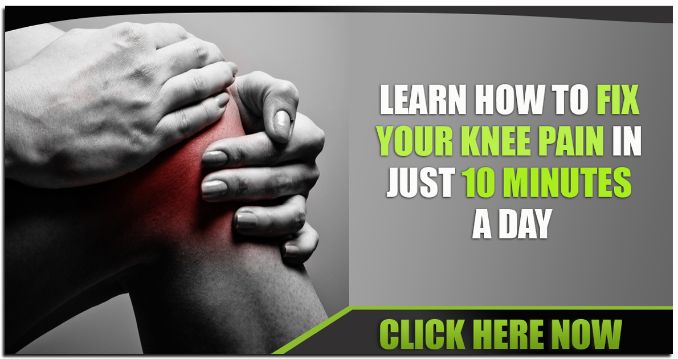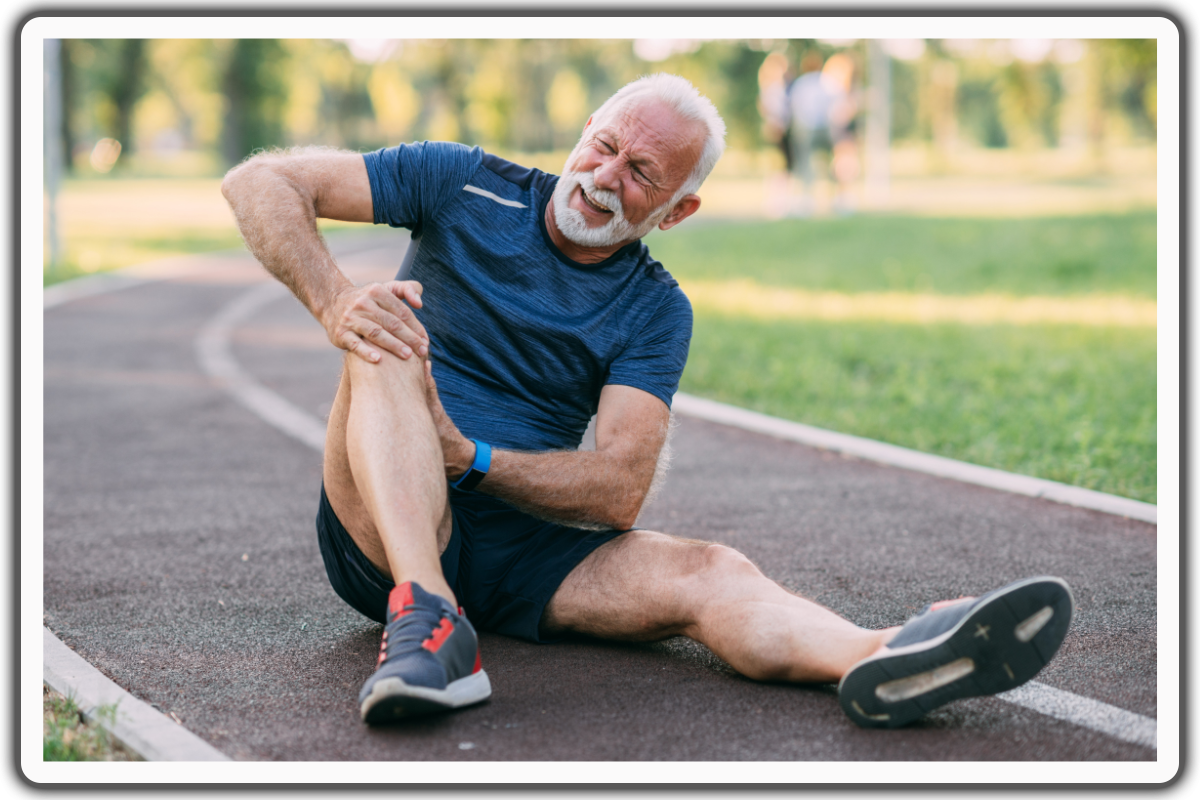
Overcoming Knee Pain with Leg Strengthening Exercises
Dealing with persistent knee pain can be a challenging experience, leading many individuals to surrender their favorite activities and hobbies reluctantly. As knee pain becomes a regular part of their lives, the familiar refrain of "why are leg workouts so tiring? I can't do that anymore; my knees hurt too much" becomes an unfortunate mantra, limiting physical and emotional well-being.
However, it's crucial to emphasize that exercising is a better way to address knee pain than simply compromising one's lifestyle. Strengthening and rehabilitating the knee joint relieves discomfort and restores the joy and fulfillment of once-compromised activities.
How Does Leg-Strengthening Workout Help in Alleviating Bad Knees
Strengthening the legs plays a pivotal role in alleviating knee pain by enhancing the stability and support of the knee joint. The muscles surrounding and supporting the knee, including the quadriceps, hamstrings, and calf muscles, are crucial in maintaining proper joint alignment. When these muscles are weak or imbalanced, they can put excess stress on the knee, leading to pain and discomfort. Leg exercises target these muscle groups, helping to rebalance and stabilize the knee joint. This, in turn, reduces the load and pressure on the knee, diminishing pain and improving overall joint function.
Furthermore, strong leg muscles enhance shock absorption during weight-bearing activities like walking and running. This reduces the impact forces transmitted to the knee, decreasing wear and tear on the joint.
Strong legs also promote better knee cap alignment (patella), preventing conditions like patellar tracking disorder. In essence, leg strengthening alleviates knee pain and is a proactive measure to prevent future knee problems. Let's now dive in to the leg workouts even if it's so tiring.
Leg Workout for Bad Knees
By fortifying leg muscles through focused exercises, individuals can effectively restore knee health, ultimately regaining the ability to participate in activities they once thought were lost due to persistent discomfort. So, on your next leg day workout, incorporate these leg-strengthening exercises into your fitness routine even if leg workouts are so tiring:
1. Lunge
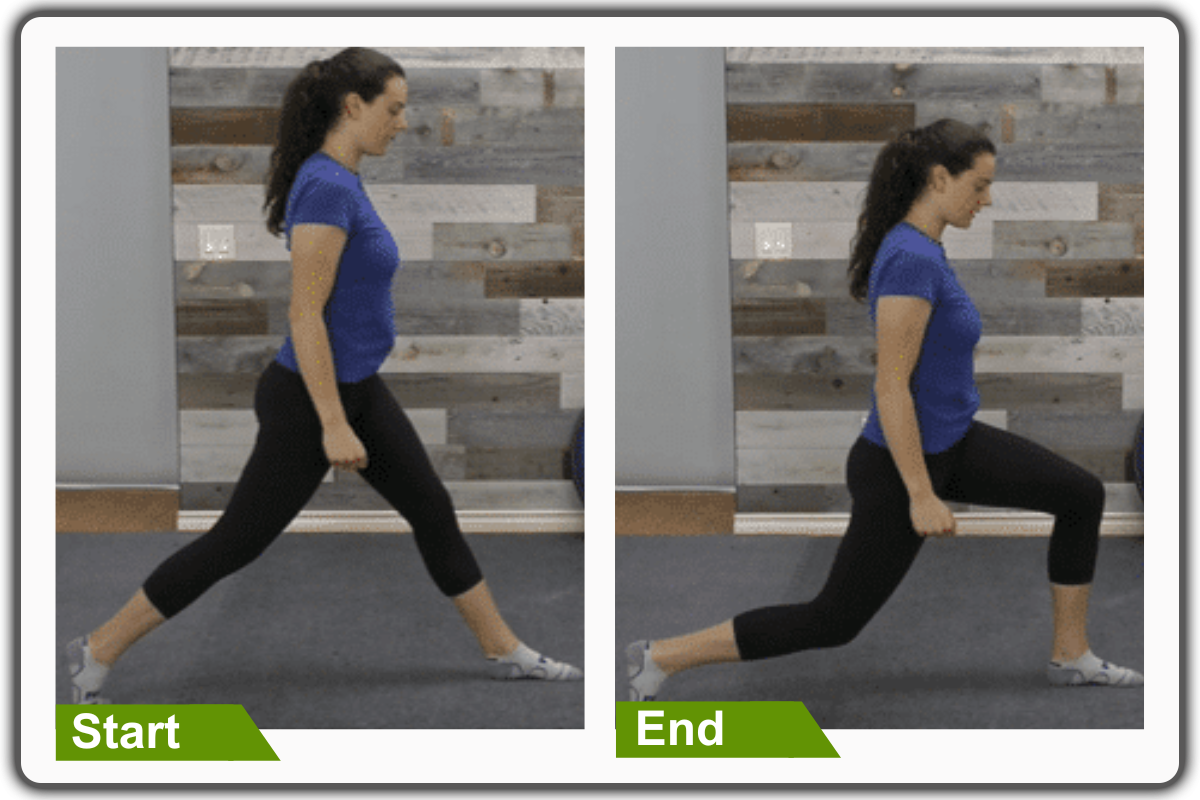
Lunge
For this exercise, you can utilize the wall for balance if needed.
Begin in an upright standing position, maintaining proper alignment with your head, shoulders, hips, and legs. Place one hand on a wall for support and engage your core. Take a big step back with one leg and lower your back knee to the ground, ideally to a 45-degree. Raise back up to return to the starting position and repeat the movement to make the exercise more challenging, you can utilize equipment like dumbbells or resistance tubing. Start with one set of 10 repetitions on each side. The intensity of these exercise is light.
2. Hip Hinge
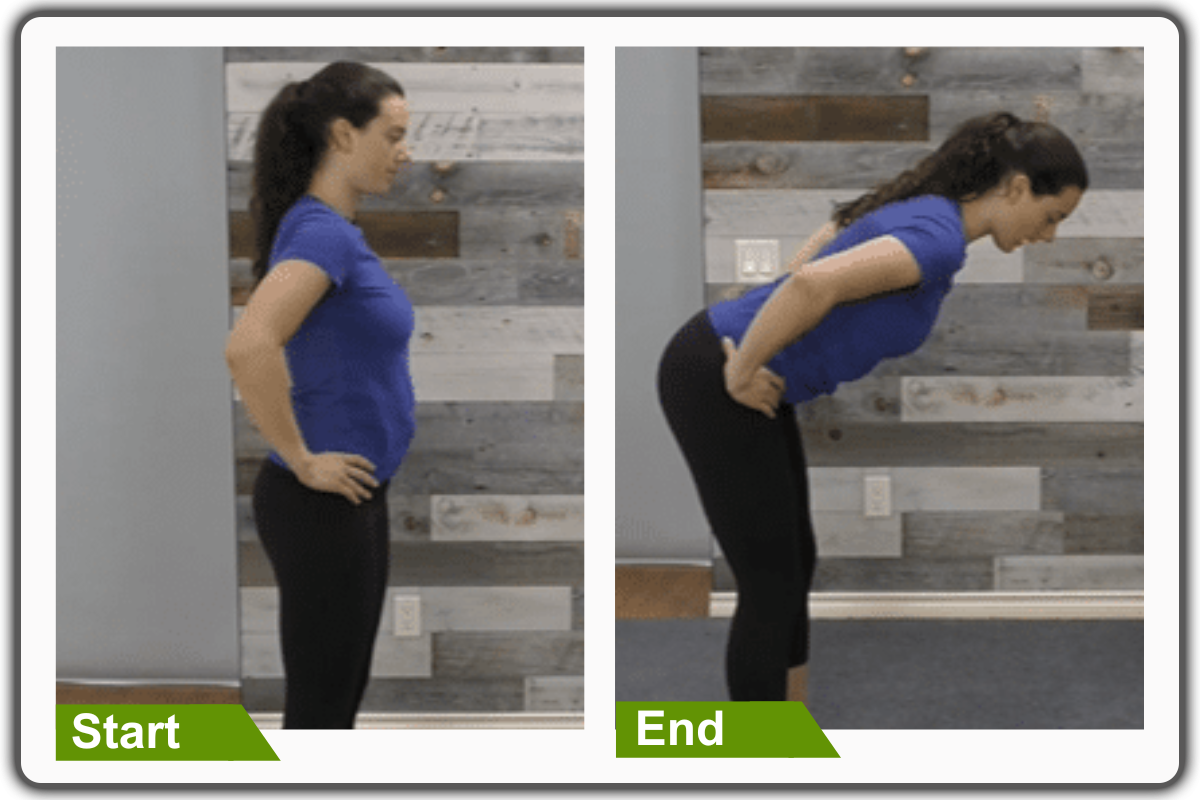
Hip Hinge
Begin in an upright standing position with your feet hip-width apart, maintaining proper alignment with your head, shoulders, hips, and legs. Place your hands on your core. Bend your knees slightly and pivot through your hips to bend your upper body forward, ideally to be parallel to the floor raise up to return to the starting position. To make the exercise more challenging, you can utilize equipment like dumbbells for added resistance. Start with one set of 10 repetitions. The intensity of the exercises is light.
Alternative Exercise
2A. Single-leg Deadlift
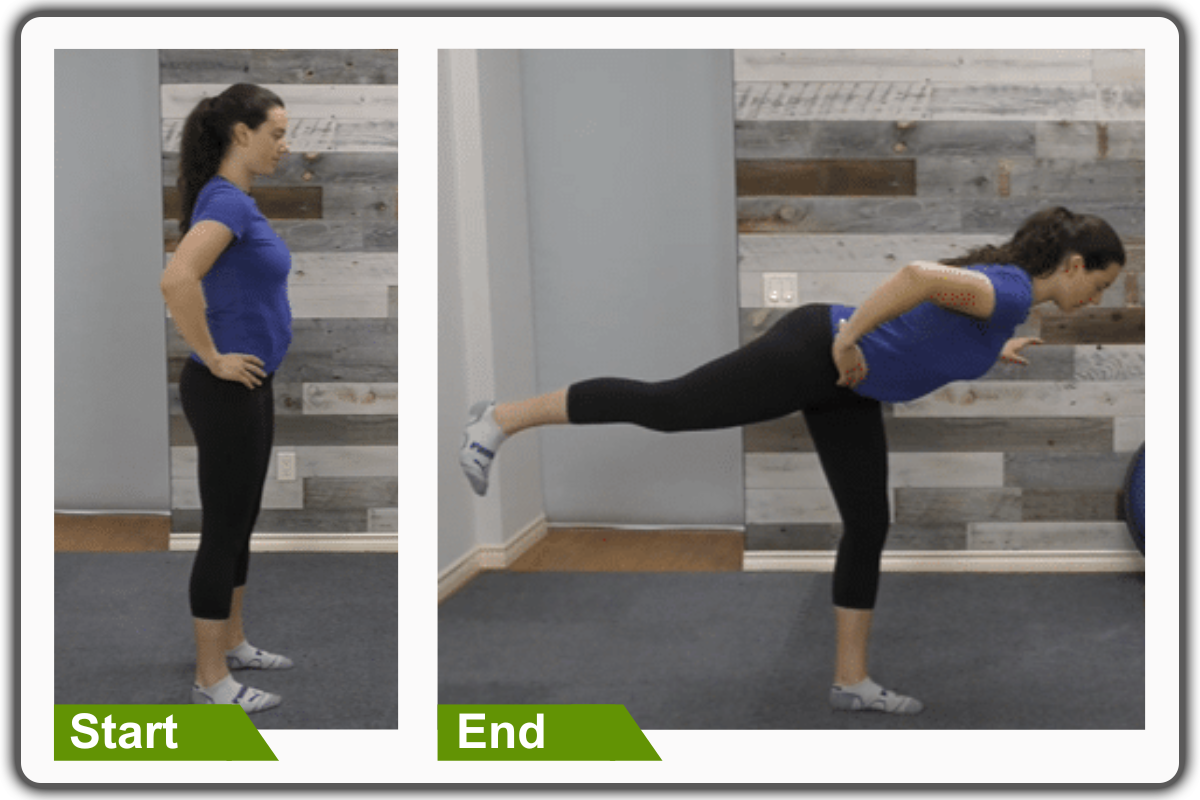
Single-leg Deadlift
For this exercise, you can utilize the wall for balance if needed.
Begin in an upright standing position with one hand up against the wall for balance. Maintain proper alignment with your head, shoulders, hips, and legs. Engage your core and place all of your body weight on one foot. Bend your supporting knee slightly and hinge through your hips, bending until your upper body is parallel to the floor while extending your leg back, forming a straight line with the upper body, Raise back up to return to the starting position. Start with one set of 10 repetitions on each side. The intensity of this exercise is light.
3. Calf Raise
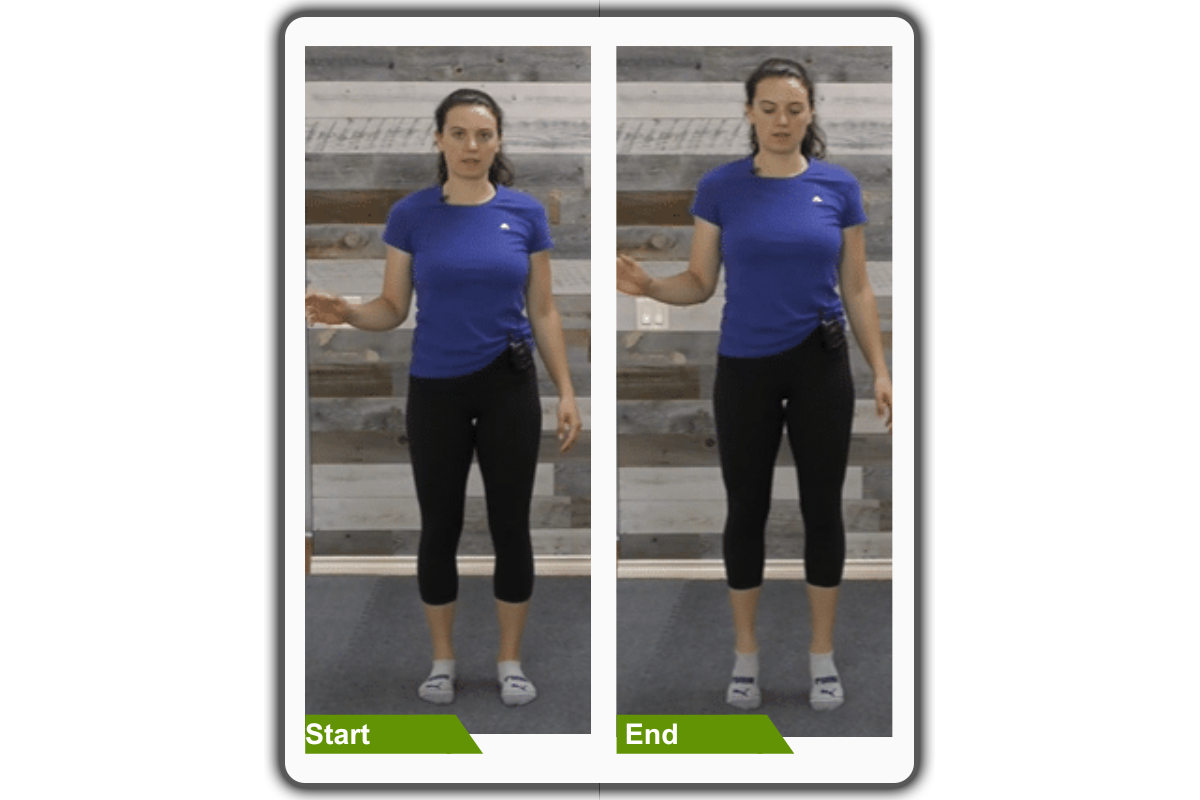
Calf Raise
For this exercise, you can utilize the wall or chair for balance it needed.
Begin in an upright standing position with one hand up against the wall or chair for balance. Maintain proper alignment with your head, shoulders, hips, and legs. Engage your core and raise your toes on both feet. Lower your heels back down to return to the starting position and repeat the movement.
To make the exercise more challenging, you can utilize equipment like dumbbells or work on single-leg movement. Start with one set of 10 repetitions. The intensity of these exercises is light.
4. Leg Extension
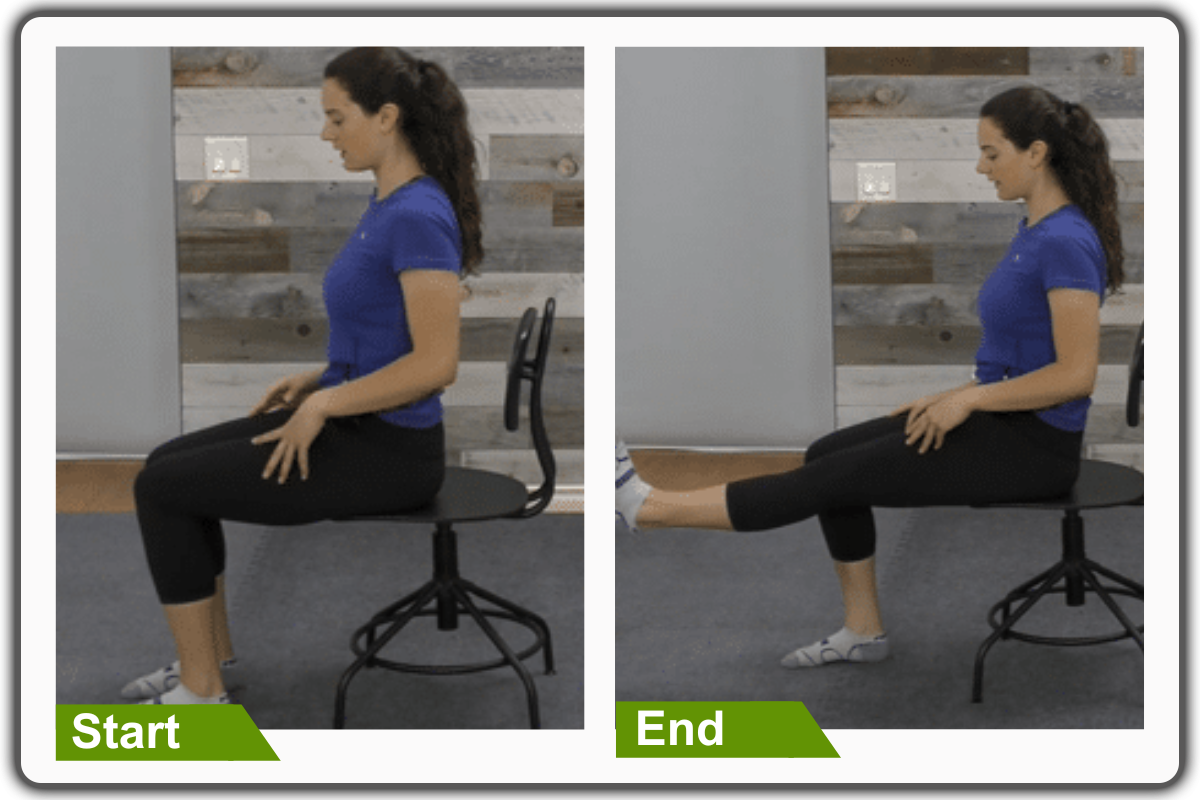
Leg Extension
Begin in an upright sitting position, maintaining proper alignment with your head, shoulders, and hips. Place your hands on your thighs. Engage your core and lift to straighten your leg forward with your toes pointing towards the ceiling. Return to the starting position and repeat the movement. After several repetitions, perform the movements on the opposite leg.
To make the exercise more challenging, you can utilize equipment like resistance tubing. Start with one set of 10 repetitions on each side. The intensity of these exercise is light.
5. Glute Bridge
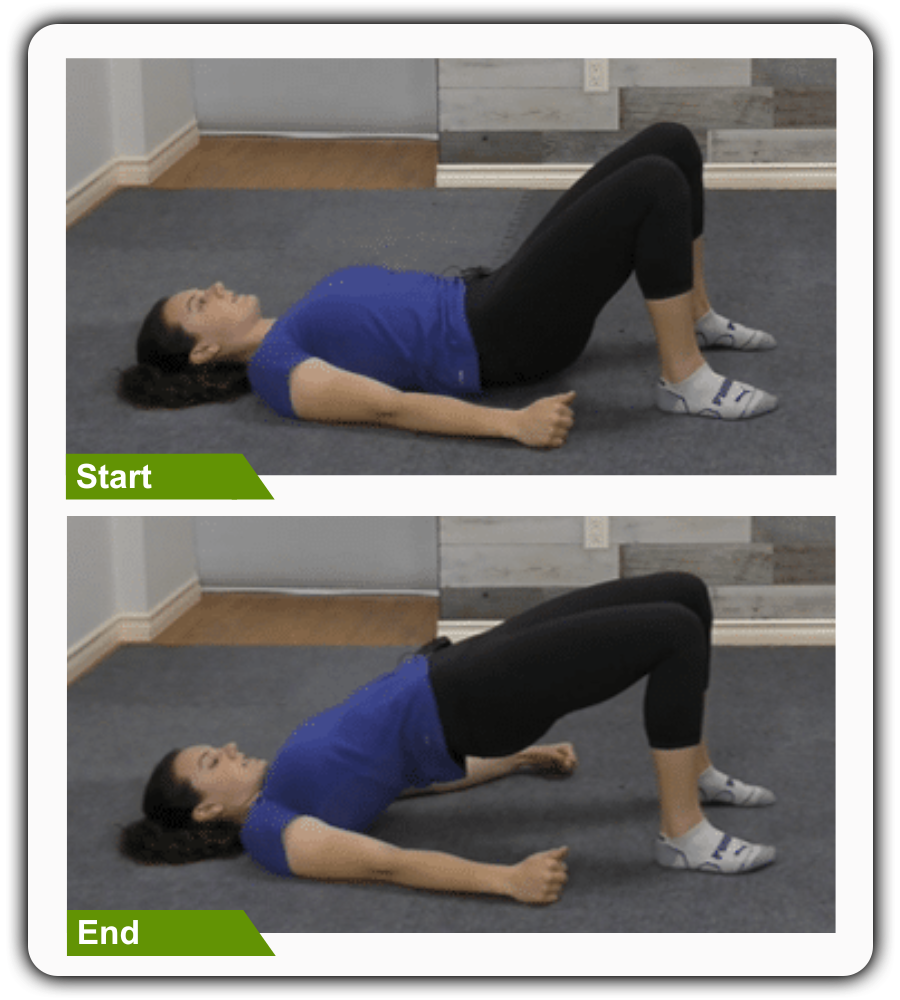
Glute Bridge
For this leg workouts that is so tiring, lie on your back with your knees bent and your feet flat on the floor. Maintain good alignment with your head, shoulder, and hips, relaxing your upper body. Bring your arms to your sides. Contract your abdominal area, then push from your heels to lift your hips. Hold this position for several deep belly breaths, in through your nose and then out through your mouth. Relax and return to the starting position. Perform the movement 12 repetitions.
Other Leg Exercises to Resolve Knee Pain
Beyond the well-known lower body exercises, here are other best leg exercises for resolving knee pain, offering a path to enhanced joint stability, stronger leg muscles, and relief from the constraints of persistent discomfort. Try these even if leg workouts that are so tiring.
1. Sumo Squat Stand
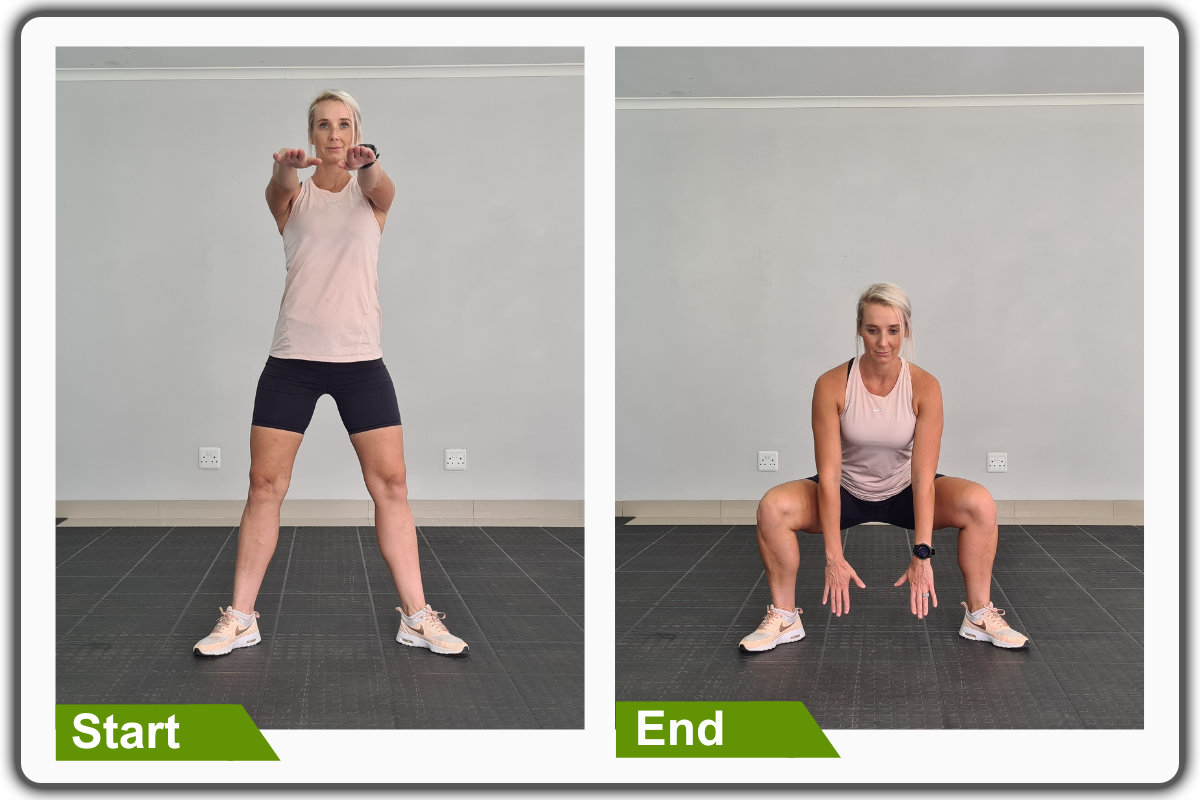
Sumo Squat Stand
For this leg workout, begin in an upright standing position with your feet considerably wider than shoulder-width apart, and your toes pointed slightly outward. Maintain good alignment with your head, shoulders, and hips. Extend your arms in front of your hips to lower your seat into a deep squat position. Keep your knees behind your toes as you lower both hands to the floor. Raise back up to return to the starting position, squeezing your glutes at the top position. start with 1 set of 5 repetitions.
2. Low Squat
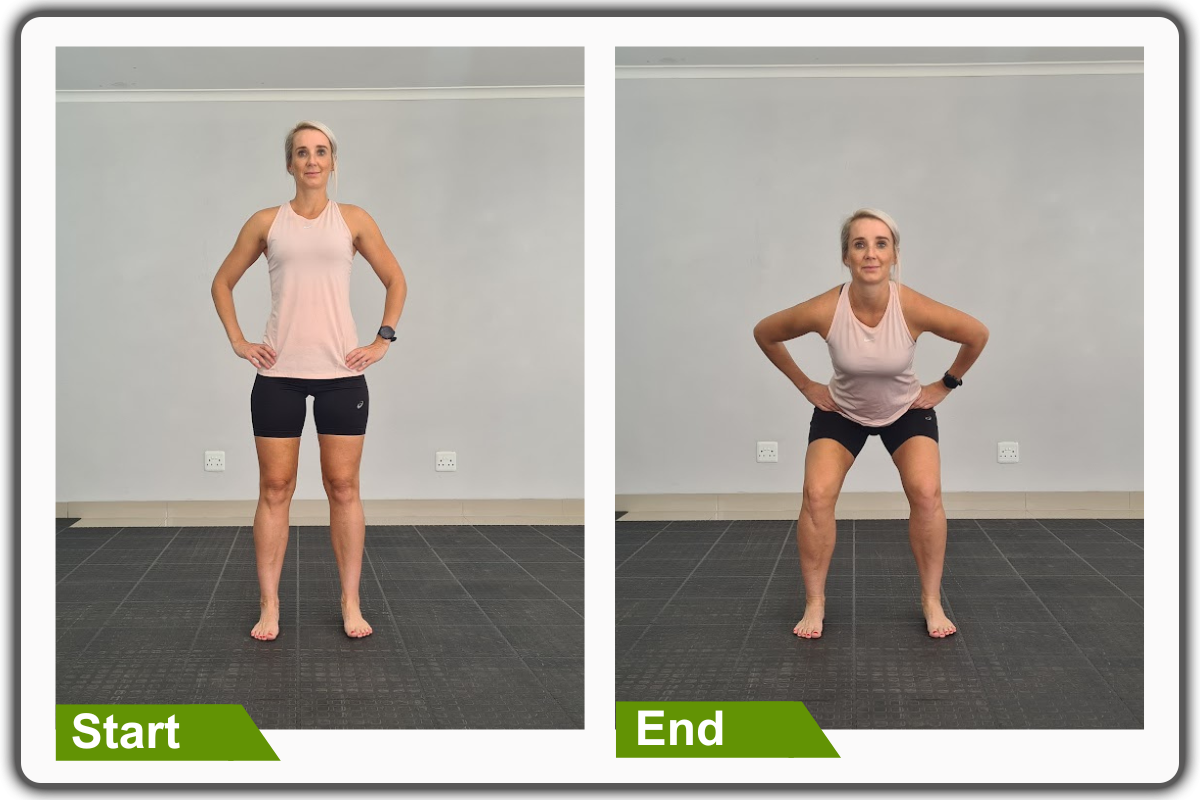
Low Squat
Begin in an upright standing position with your feet shoulder-width apart, maintaining good alignment with your head, shoulders, and hips. Place your hands on your hips and tighten your abdominal muscles. Bend your knees and hinge through your hips to move into a low squat position. Keep your knees behind your toes. Raise back up to the starting position, squeezing your glutes at the top position. Repeat the movements Start with 1 Set of 5 repetitions.
3. Pillow Knee Squeeze
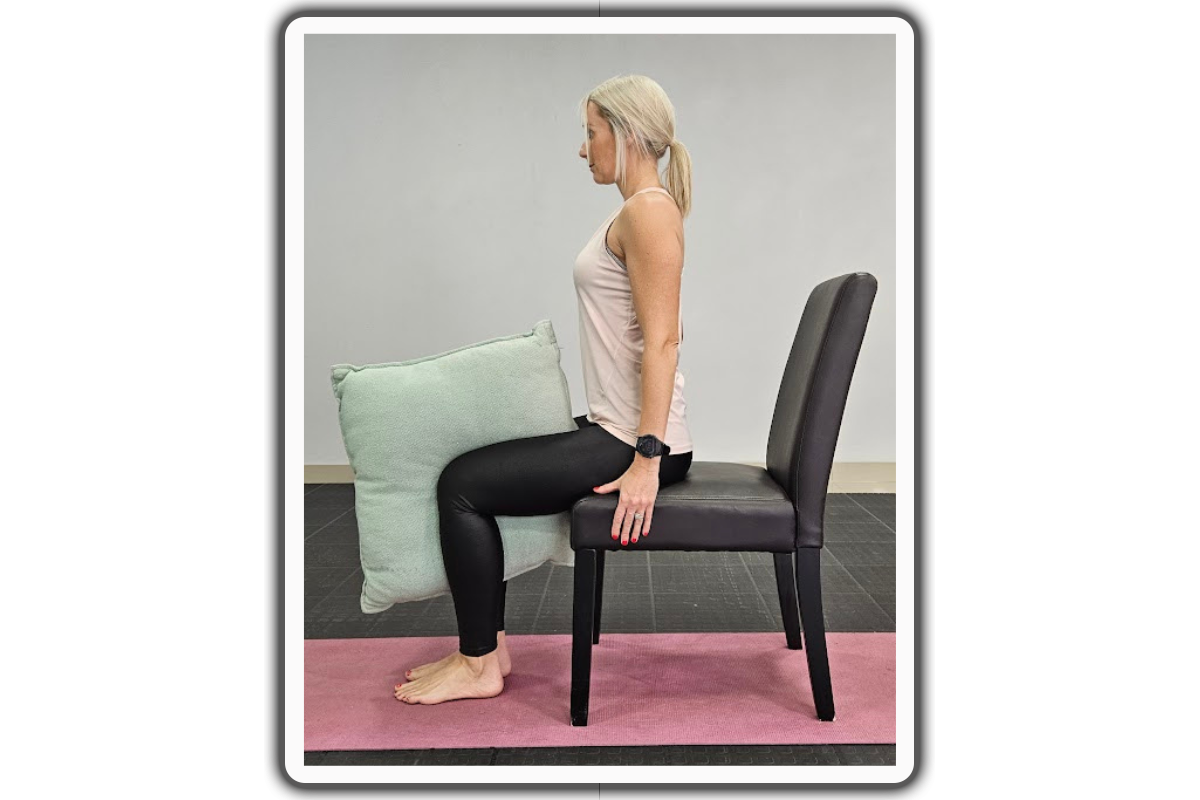
Pillow Knee Squeeze
For this leg workout, use a pillow, yoga block, rolled-up towel, or anything dense that you can squeeze between your knees.
Begin in an upright sitting position on the edge of the chair with your knees bent and feet on the floor, maintaining proper alignment with your head, shoulders, and hips. Place a pillow between your knees with your hands placed at your sides on the chair. Squeeze your knees together and hold this position for several deep belly breaths, in through your nose and out through your mouth. Relax and repeat the movement Start with 1 set of 5 repetitions, holding for 3 - 5 seconds.
4. Single Leg Squats
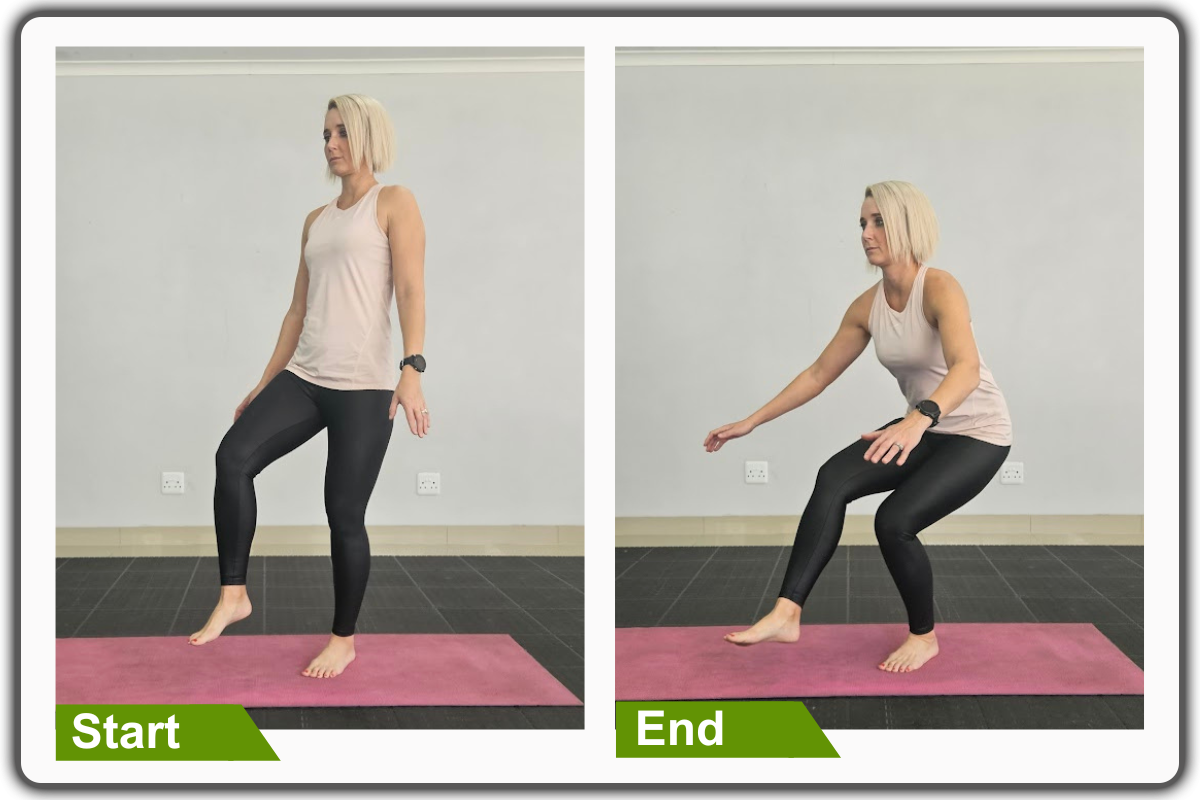
Single Leg Squats
For this leg exercise, you can utilize the wall or chair for balance if needed.
Begin in an upright standing position with your feet hip-width apart, maintaining good alignment with your head, shoulders, hips, and legs, Engage your core and then transfer all of your body weight onto your left foot. Engage your core, bend your left knee, and hinge through your hips to lower into a squat position. Try to lower yourself as far as your flexibility and strength allow. Hold the position for a couple of seconds. Relax and then return to the starting position. Repeat the movement on the opposite side. Start with 1 set of 5 repetitions on each leg.
5. Runner's Lunge
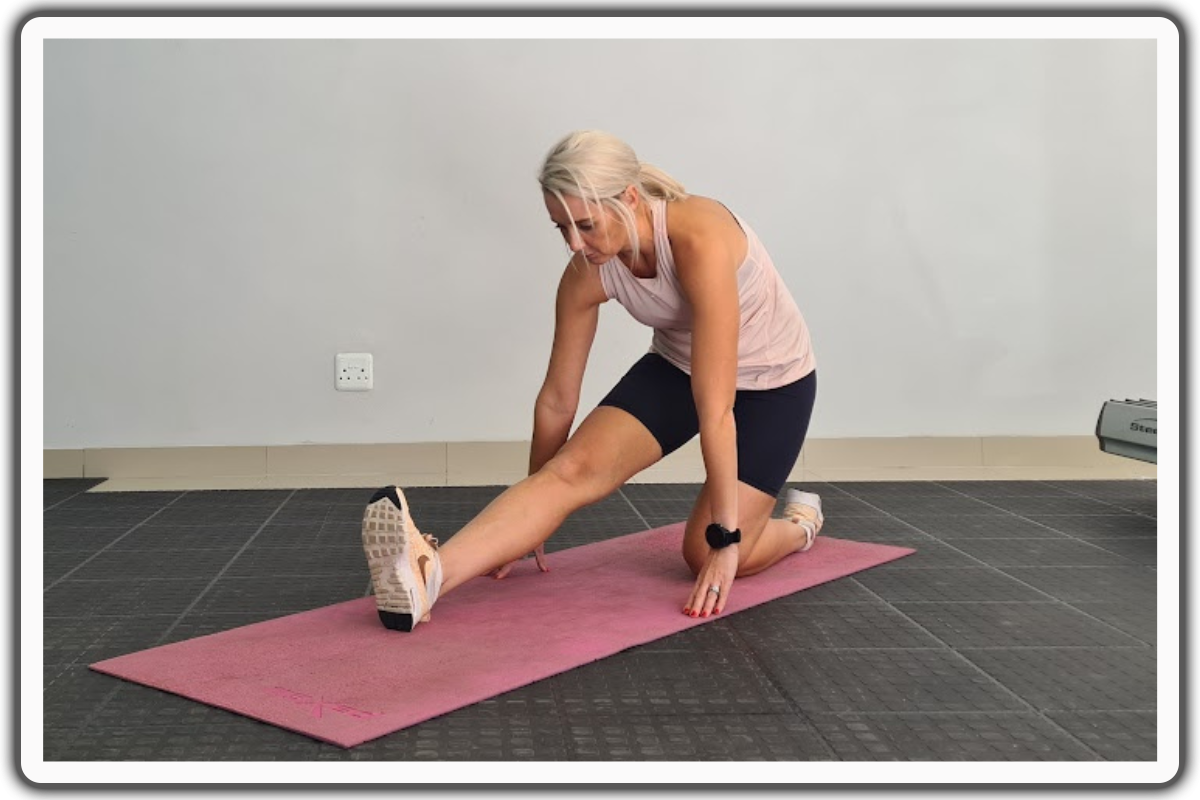
Runner's Lunge
For this leg workout, begin in an upright kneeling position, maintaining good alignment with your head, shoulders, and hips. Take a big step forward with your right leg, extending it in front of you. Lower your hips down over your back knee and plant your hands on the floor at your sides for support. Tighten your abdominal area and hold this position for several deep breaths. Relax and return to the starting position. Repeat the movement on the opposite side.
The Importance of Proper Knee Care
Knee care is of utmost importance, as our knees play a pivotal role in our daily lives, providing mobility and stability. By taking proactive steps to preserve knee health by doing leg workouts that are so tiring, we can mitigate the risk of knee-related problems and reduce the likelihood of injuries and diseases that often afflict this vulnerable joint.
Maintaining an optimal weight by incorporating a nutritious diet and consistent physical exercise even if leg workouts are so tiring is a fundamental aspect of knee care, as excess weight places undue stress on the knees, increasing the risk of osteoarthritis. Regular physical activity, especially low-impact exercises that strengthen the muscles around the knee, can enhance joint stability and flexibility, reducing the chances of injury.
Furthermore, knee care extends to avoiding high-impact activities or employing proper techniques in sports and workouts to prevent overexertion and undue strain on the knee joints. Good posture and supportive footwear are additional measures that help distribute body weight evenly and minimize knee stress.
Activities to Avoid with Bad Knees
1. High-Impact Sports
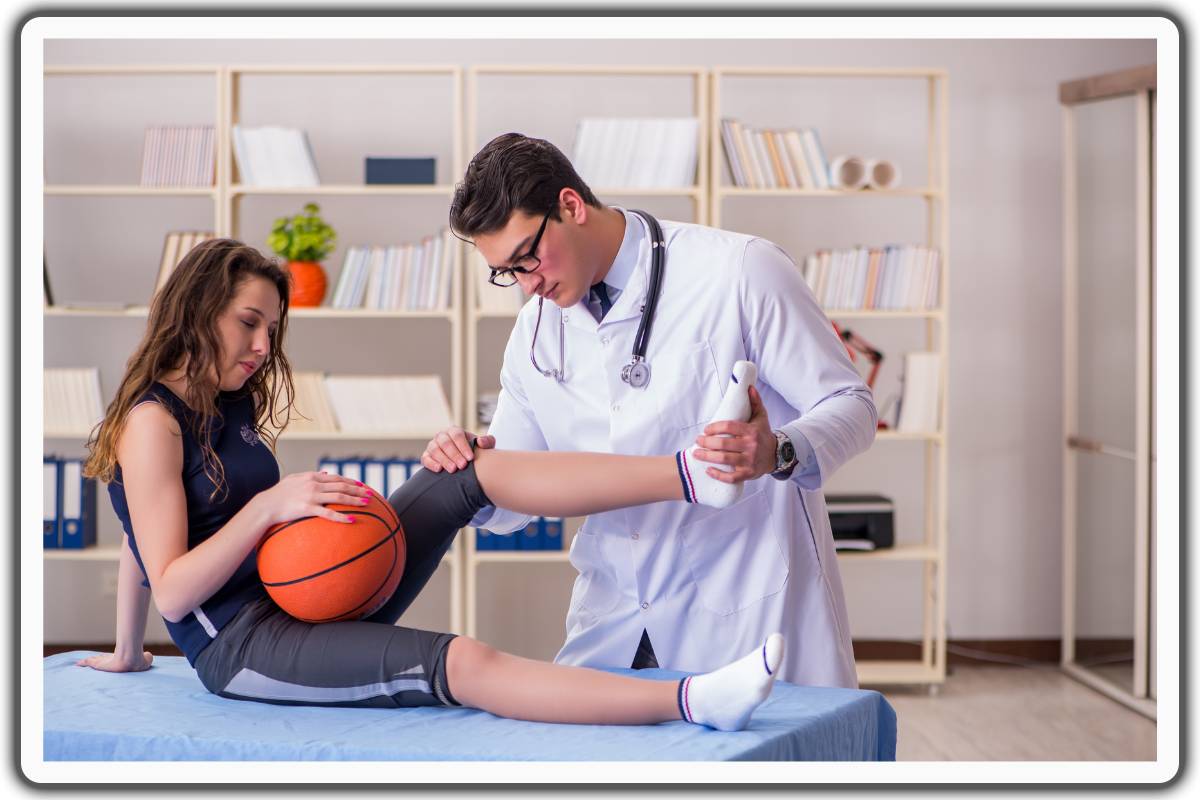
Activities such as running, basketball, and tennis subject your, knees to repeated jarring impacts. if you have knee issues, consider low-impact alternatives like swimming or cycling.
2. Stair Climbing
Climbing stairs or steep inclines frequently can strain your knees. If possible, use elevators or escalators, and consider using walking aids like handrails.
3. Prolonged Standing
Extended periods of standing can stress your knee joints. Ensure you take regular seated breaks, shift your weight from one leg to another, or use a stool for support when possible.
4. Excessive Weight Lifting
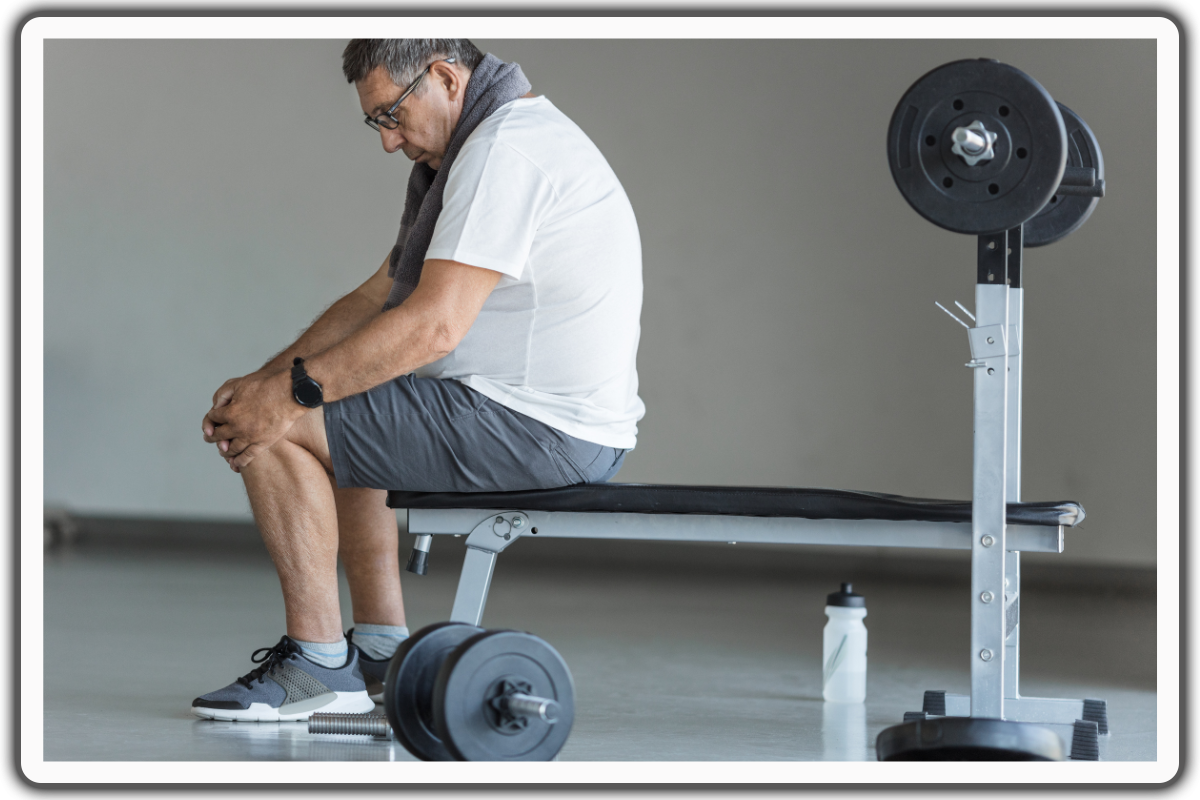
Lifting heavy weights with improper form can strain your knees. If you engage in weightlifting, ensure you have proper technique and consider working with a trainer.
5. High-Intensity Interval Training (HIIT)
Some HIIT exercises involve rapid, repetitive movements that may not be suitable for those with knee issues. Modify your workout to incorporate low-impact alternatives and consult with a fitness professional for guidance.
Foods to Avoid with Bad Knees
1. Processed Foods

Highly processed and fried foods, often laden with trans fats and saturated fats, are notorious culprits for promoting inflammation in the body. These detrimental fats have the potential to initiate an inflammatory reaction, worsening the discomfort and knee pain. To support your knee health and overall well-being, replace processed foods with whole, unprocessed options like fresh fruits, vegetables, and whole grains.
2. Sugary Beverages
Beverages high in added sugars, such as soft drinks, energy drinks, and certain fruit juices, can contribute to systematic inflammation. The excess sugar can lead to spikes in blood sugar levels, worsening inflammatory responses, To reduce the risk of inflammation and its effects on your knees, opt for healthier alternatives like water, herbal teas, or drinks with no added sugars.
3. High-Sodium Foods

Foods rich in sodium can lead to water retention to water retention and increased swelling, which can be particularly uncomfortable for those with knee issues. Processed and pre-packed snacks, as well as many restaurant meals, are often high in salt. Managing knee swelling and discomfort can be eased by preparing homemade meals with reduced salt and spices for flavor.
4. Red Meat
Red meat, including beef and lamb, is known for its saturated fat content, which can promote inflammation in the body. These fats can trigger the release of inflammatory chemicals, potentially worsening knee pain. If you have knee issues, consider leaner protein sources like skinless poultry, fish, or plant-based proteins like beans and lentils to reduce inflammation and improve overall joint health.
5. Refined Carbohydrates
Consuming products containing processed grains, like white bread, sweetened cereals, and specific pastries, may contribute to inflammation. Refined carbohydrates have a high glycemic index, causing rapid spikes in blood sugar levels. This can, in turn, contribute to a state of chronic inflammation. Opt for whole grains like whole wheat, quinoa, and brown rice to support overall health and reduce the risk of inflammation affecting your knees.
Habits to Avoid with Bad Knees
1. Smoking
Smoking can contribute to inflammation and oxidative stress in the body. If you smoke, consider seeking support to quit this habit.
2. Excessive Alcohol
Heavy alcohol consumption can promote inflammation. If you choose to drink, do so in moderation and consult with a healthcare professional if necessary.
Knee-Related Injuries and Diseases
1. Osteoarthritis
Osteoarthritis is a knee condition characterized by the gradual deterioration of cartilage, leading to the progressive degeneration of the joint. This leads to bone friction, causing pain, stiffness, and reduced range of motion, commonly affecting older individuals.
2. Rheumatoid Arthritis
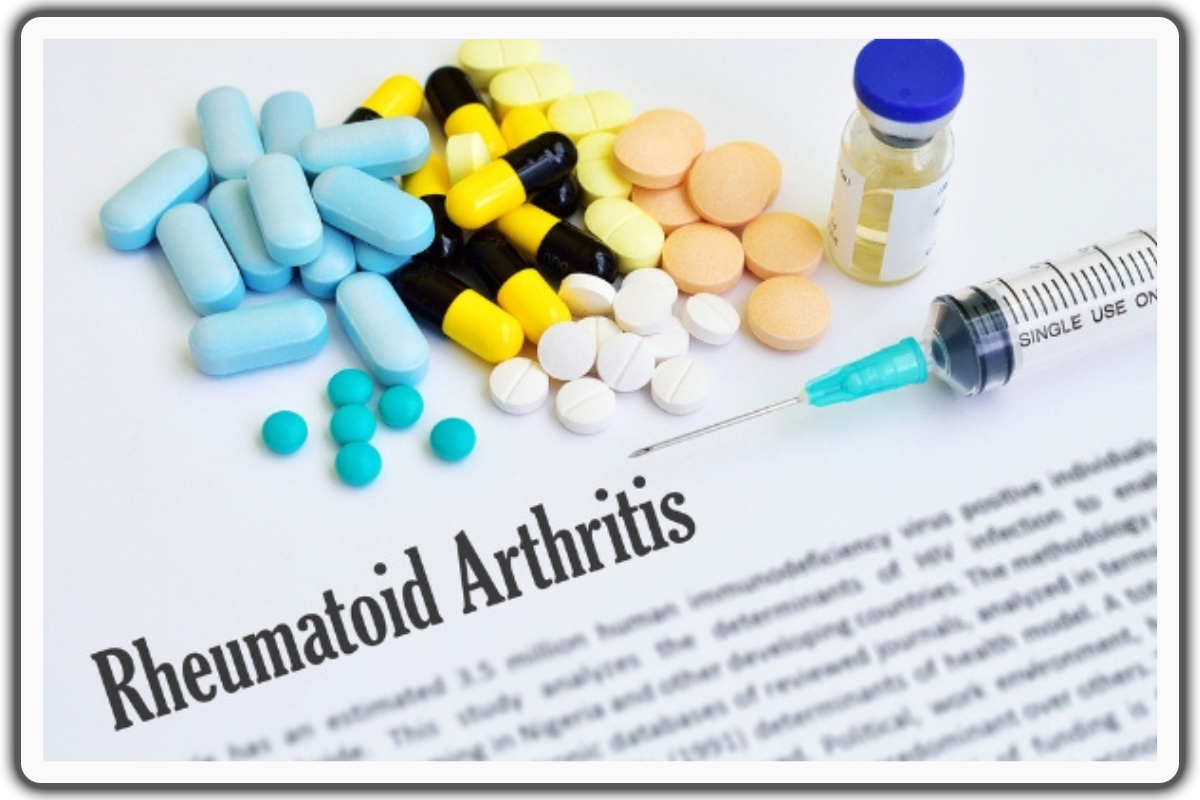
Rheumatoid arthritis is an autoimmune disorder that can attack the synovium (lining of the membranes surrounding the knee joint). It results in chronic inflammation, pain, and swelling, often leading to joint deformities if left untreated.
3. Meniscus Tear
A meniscus tear occurs when the cartilage between the thigh bone and shinbone in the knee gets damaged, typically from sudden twisting or impact. Symptoms include pain, swelling, and difficulty moving the knee.
4. Anterior Cruciate Ligament (ACL) Tear
Sport-related injuries frequently involve ACL tears, which may result in instability, swelling, and severe pain in the knee. Surgical intervention is often required to restore stability.
5. Patellar Tendinitis
Patellar tendinitis, or "jumper's knee," is characterized by inflammation of the patellar tendon, causing pain just below the kneecap, often associated with repetitive jumping or running.
6. Iliotibial (IT) Band Syndrome
This overuse injury results from friction between the iliotibial band and the knee joint, leading to pain on the outer side of the knee, especially during activities such as running.
7. Bursitis

Bursitis develops when the bursae, fluid-filled sacs that envelop the knee joint, become inflamed, leading to localized discomfort, swelling, and, sensitivity, typically stemming from either overuse or injury.
8. Chondromalacia Patellae
Chondromalacia patella are characterized by the softening and deterioration of the cartilage beneath the kneecap, resulting in pain, especially when bending the knee, climbing stairs, or kneeling.
9. Runner's Knee (Patellofemoral Pain Syndrome)
This condition results in discomfort in the vicinity of or behind the kneecap. It is often attributed to misalignment of the patella in the femoral groove, leading to discomfort during activities like running or cycling.
10. Gout
Gout can affect the knee when uric acid crystals accumulate in the joint, leading to sudden, intense pain, inflammation, and redness. Dietary and lifestyle changes can help manage this form of arthritis.
Conclusion
Incorporating targeted exercises into your daily routine is vital for resolving knee-related problems and maintaining overall joint health, even though leg workouts are so tiring. Engaging in exercises specifically tailored to enhance the strength of the muscles surrounding the knee can help alleviate discomfort and enhance stability and flexibility, reducing the risk of future injuries.
Exercises is indispensable in rehabilitating your knees and restoring the freedom to engage in activities you love. It's a testament to the body's resilience and adaptability, consistent effort yielding tangible results in improved knee health. That's why continue doing leg workouts even if it's so tiring.
However, it's equally essential to remember that a holistic approach to knee health encompasses both exercise and dietary considerations. Mindful choices in what we consume can significantly manage inflammation and prevent conditions like osteoarthritis.
Reducing processed foods, refined sugars, and excessive salt intake can be instrumental in mitigating inflammation while incorporating nutrients like omega-3 fatty acids from fatty fish or antioxidants from fruits and vegetables can further support joint health.
By combining the benefits of exercise with balanced and anti-inflammatory diet, you can pave the way for a life free from knee-related restrictions, relishing the joys of movements and pursuing your passions with renewed vigor.
Give these exercises a go if you are dealing with knee pain even you feel legs workouts are so tiring. Stronger leg muscles can make this pain less severe or even go away completely.
For your complete guide to eliminating knee pain, make sure to check out Knee Pain Solved here!

